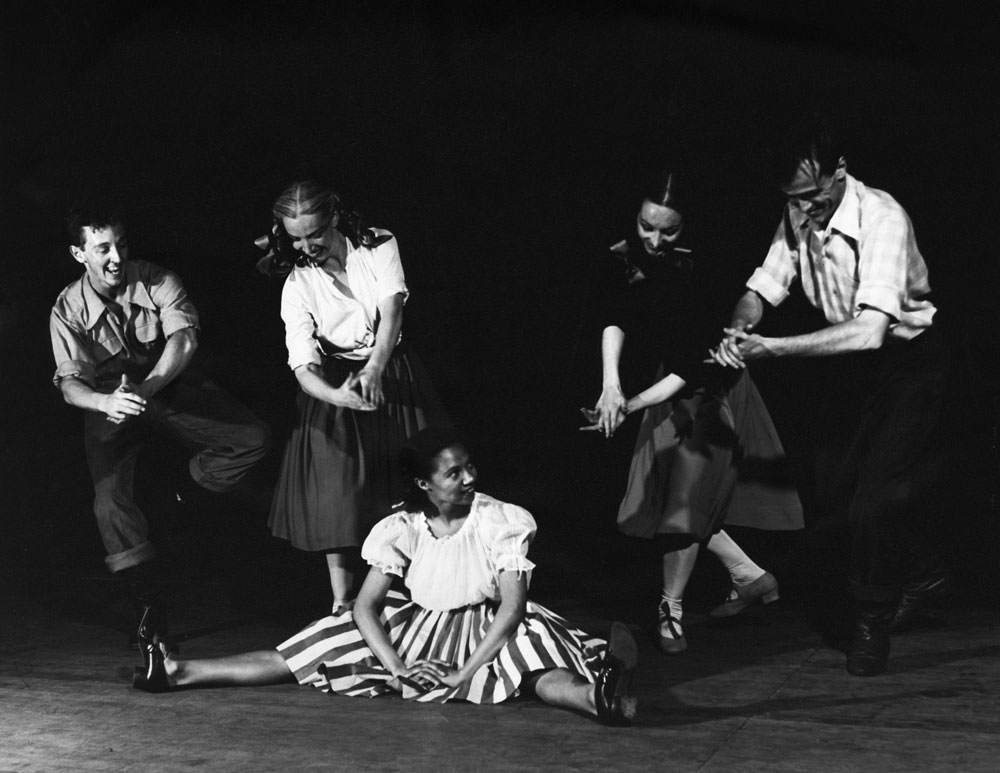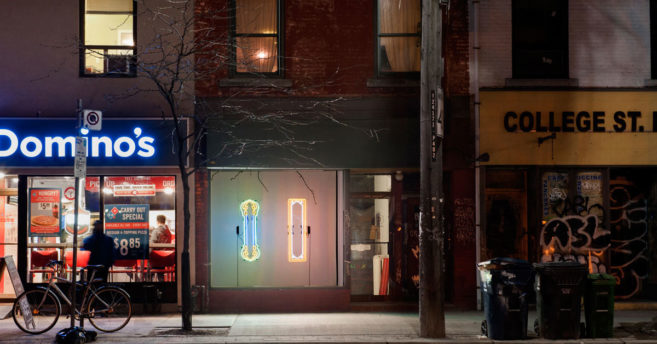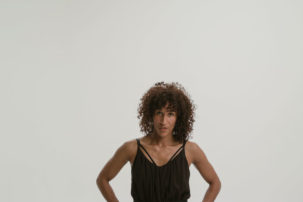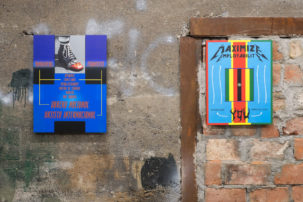Five youthful performers appear in a photograph from the mid-1940s. When it was donated to Dance Collection Danse, an important archive dedicated to Canadian dance history, the donor was able to identify all but one of its five subjects. The names of the four white performers were recorded; but the identity of the one Black performer remains a matter of further research. The photograph was installed at the beginning of the exhibition “It’s About Time: Dancing Black in Canada 1900 to 1970,” curated by Seika Boye, a scholar and the director of the newly established Institute for Dance Studies at the University of the Toronto. It set the stage for the entire show.
Most images are destined for oblivion. In this case, a historically valuable document is physically saved in the Dance Collection Danse archive—but even this exceptional event fails to ensure that the histories of Black artists are also preserved. The problem is both material and systemic, and required Boye to perform a double duty: honour the frequently overlooked accomplishments of Black artists in Canada (and thus educate audiences about their work); and critically articulate the systemic forces that make this narrating difficult (and thus encourage further historical research).
Comprised of documentary photographs, newspaper articles and artifacts of material culture, the exhibition was structured as a series of encounters. A section titled “Representation and Reception” dealt with performative representations of Blackness and media reports on the African body on the Canadian stage. A photograph of dancers in blackface was paired with a retail catalogue selling minstrel accessories and stage-make-up instructions for achieving “accurate” ethnic complexions. Newspaper reports on a 1959 performance by Les Ballets Africains in Montreal and Toronto—and on the ensuing acts of police intimidation—were contrasted with the Guinean ensemble’s own descriptions of their artistic goals.
The impact of Canada’s racist immigration laws and the bans on “frolicking” that targeted racialized forms of public gathering were explored in a section titled “Legislation and Protest.” A 1956 Globe and Mail newspaper photograph showed a Black man dancing in a mixed-race social dance. He looks directly into the camera with arms spread wide—a gesture of individual and collective taking-up-space that reaches across time to hint at dance as one of the many forms of creative resistance to racism in Canada.
In such cases, oppressive representations of race were contrasted with self-expressions of Black experience centred on the performing body. By means of these critical encounters, Seika Boye’s thoughtfully curated exhibition accomplished its double task. It told an important story. And it pointed to some of the still-prevailing tensions that make such telling a difficult but necessary act.

 Don Gillies, Janet Baldwin, unknown (seated–possibly Portia White), Dorothy Dennenay and Bill Diver of the Volkoff Canadian Ballet, c. 1945. Jim Bolsby Portfolio, Dance Collection Danse.
Don Gillies, Janet Baldwin, unknown (seated–possibly Portia White), Dorothy Dennenay and Bill Diver of the Volkoff Canadian Ballet, c. 1945. Jim Bolsby Portfolio, Dance Collection Danse.







